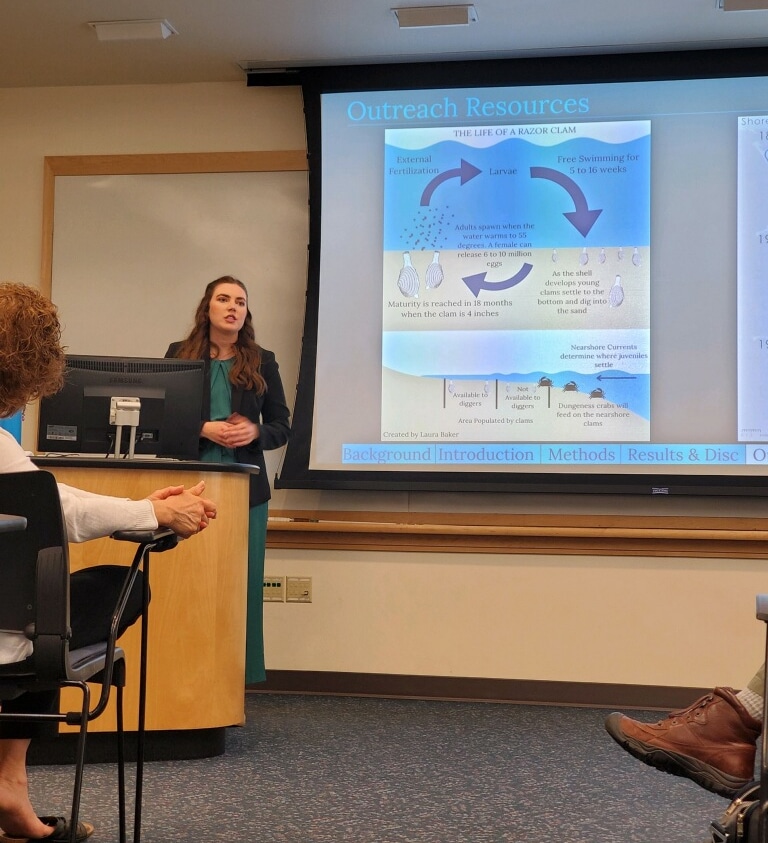During my time as a Malouf Scholar, I completed my research on the impacts of the razor clam fishery on Oregon coastal communities. After successfully defending, I am officially graduated and working on publishing my findings.
Some of the main finds from the research were that the razor clam fishery is an important fishery to the economy of the northern coast of Oregon. With the recreational fishery bringing in an estimated $1.8 million in 2019. This fishery has also been an important resource to the Dungeness crab fishery, supplying bait to commercial and recreational crabbers. It was also found that biotoxin closures due to harmful algal blooms off the coast of Oregon were the largest issue this fishery faces.
There are still some gaps in understanding this fishery’s importance. For instance, no estimate is available for the commercial razor clam harvesting contribution to the local economy. There is a contribution from commercial clam harvest supplying clams for seafood markets and the bait market, but no way to accurately assess this input without an in-depth economic assessment.
While conducting the research, many participants from the interviews commented on how they wanted to know more about the fishery and biotoxin closures. After hearing these requests, I drafted an outreach document for people on the north coast participating in the fishery. This document goes over the main findings of the research and then talks about what biotoxins are, why they happen, and why the fishery is closed because of them. I hope to have this published in the next couple of months for use by the Oregon Sea Grant and the Oregon Department of Fish and Wildlife.
I am exceedingly grateful to the staff at Oregon Sea Grant for supporting me during this research. I am so pleased that this project has been able to fill a knowledge gap and produce products that will be useful to the members of the harvesting community.
I look forward to reading about what the next group of Malouf Scholars shares!
All the best,
Laura



